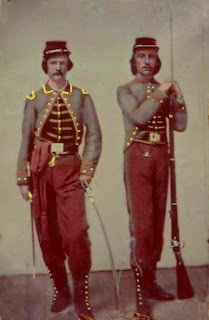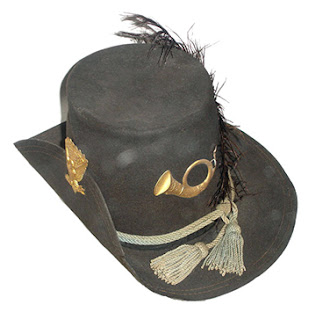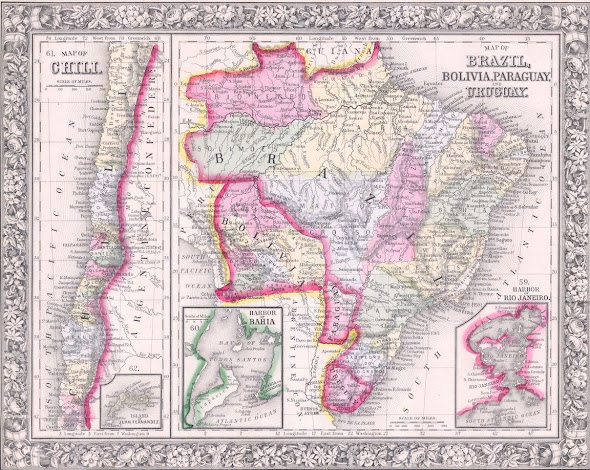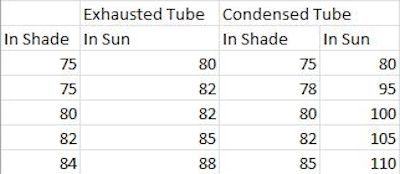Militias
The founding fathers of the country saw no need for a large standing army. The Second Amendment was supposed to be the way around that. The Second Amendment called for states to raise their own militias in whatever manner and structure they chose. The framers of the constitution never dreamed of the enormous expansion of territory their creation would eventually encompass.
Nationwide, a rough standard emerged based on monthly drills county by county in a state. All able-bodied white men—and white men only in all militias—were required to furnish their own arms and, if they had one, a “good horse.” State militias were commanded by a major general appointed by the governor of the state. A state was the divided into military districts aggregating the various county militias. Each district was commanded by a brigadier general elected by the militia of that district. Militia companies elected their own officers.
The US Army budget 1856-1857 $12,124,297
In 1861, the US Army numbered about 16,000 men. Lt. Colonel Albert Sidney Johnson (soon to be Gen. Albert Sidney Johnson, CSA) was in charge of 5,000 men sent to fight a 5,000 man Mormon militia in Utah plus another 2,000 were keeping "Bleeding Kansas" from bleeding more. Another 5,000 soldiers were scattered over the rest of the West to protect settlers. That left an army of about 4,000 men to put down Southern rebellion.
The US Navy was not in better shape.
Only state governors could call the militia into action. Moreover, militias could be called up for no more than three months of active duty and were not to serve outside their home state.
A Mid-West militia forms and elects it own officers
Secessionists setting up the Confederacy in Montgomery, Alabama, had little to fear from a Federal army to suppress them or a Federal navy to blockade their shores.
On April 15, 1861, President Lincoln called for militias totaling 75,000 men to put down areas of rebellion. There was no way Lincoln could immediately recruit, train, and supply a Federal army of 75,000 men. The state militias were his only option.
Technically—and what astonished many in both North and South—Lincoln was really calling up state militias to obviously serve outside their state boundaries.
By 1861, county militias had spotty attendance at drills and in many cases, functionally no longer existed. There were laws penalizing not showing up for drill, but enforcement was lax, especially in the South. There, men were reluctant to answer a call to service during April planting season or to donate their plow horse to a cavalry militia. The militia system had fallen far more into disuse in the South than in the North.
Private militias abounded though. Some were only open to social elites such as the Philadelphia Light Horse or the Richmond Va. Blues. Well to do men raised militia companies at their own expense, providing uniforms, arms, and regular training.
Most men raising private militias expected to be elected captain of their company, increasing their social standing.
Northern states provided
far more men than Lincoln asked for and sent them very quickly. The governor of
Massachusetts sent several thousand men to guard Washington within a week of
Lincoln’s call. The North's rapid response alarmed Southern states. Thinking the North meant to make war on them, the mid South and border states initially vowed they would not fight to secede but each would fight to defend their state.
For 1861 and much of 1862, the armies of both sides consisted primarily of men called up in militia units.
Later in the war, both
sides would “nationalize” the units that had originally been militia. This caused
an outcry in both the North and South, that this was betrayal. The men had
signed up to serve only in their own state and only for three months.
The Battle of Montebello 1859 The French Zouaves charging. Harper's Weekly 1859
In Europe, Garibaldi's successful war against the Austrian Empire to unite Italy ended in 1859. Napoleon III's French army had aided the Italians. This war of unification and liberation was widely covered in US newspapers and magazines. Some editors even urged Lincoln to make Garibaldi a Union general. Zouaves, French North African units dressed in baggy red pants and tight jackets struck Americans as exotic.
Ironically, American units paid far more attention to the foreign armies' uniforms than to the casualty reports. By 1861 the standard weapon was the rifled musket. While not much of a weapon by modern standards, it was still far deadlier than the Napoleonic era smooth bore musket. The advent of the rifled musket made the Napoleonic model of men standing in line firing volleys at each other insanely suicidal.
Nonetheless, all the militia units followed the tactics and formations of the Napoleonic Wars 45 years earlier. This would produce calamitous casualties.
Military fashions follow victorious armies. In 1860, many countries' armies dressed liked the French, the short, crushed front kepi on their heads; long trousers over boots and long coats.
Regiments on both sides fancifully dressed in the manner of the French Army’s North African infantry units, the Zouaves- red baggy pants, a very short coat over a baggy shirt, and topped off with a turban and a tassel.
To make matters more deadly and confusing, each militia unit North and South had its own uniform. There were Northern units in gray and Southern units in blue. Cavalry units were just as exotic looking. There were light cavalry “hussar” units dressed like Hungarian cavalry; even lancer units with the unique czapcha hat imitating Napoleon’s mercenary Polish cavalry. In the early battles, friendly fire casualties were high until the sides settled on gray and blue. One estimate was one third of all the wounded and killed in the early part of the war was from friendly fire.
Vivandiere 114th Pa Infantry
Perhaps the most exotic French military custom to be imported was the vivandiere, women in a modified uniform who accompanied a regiment to help nurse the sick and wounded or provide water and comfort. Not many women volunteered in this way and fewer lasted. The most famous vivandiere was called "French Mary," who joined the 27th Pennsylvania, and despite being wounded at Fredericksburg served throughout the war.
In 1855, then Secretary of War Jefferson Davis, urged William J. Hardee, a distinguished veteran of the Mexican War and professor of tactics at West Point, to write a military manual the state militias could use.
Lt. Col. William J. Hardee commanding the US 2cd Cavalry Regiment
1860, wearing a "Hardee Hat"
As the Civil War started both sides used Hardee's Tactics as their basic doctrine. Hardee's, though was based on classical Napoleonic tactics and was soon abandoned by both sides. Ironically, Georgia native William J. Hardee resigned his US Army commission in 1861 to become a Southern general.
A Hardee hat (the left side of the hat should be pinned up not the right side)
Hardee held one other distinction. He designed the dress uniform hat for the American Army shortly before the Civil War started. It looked something like a cowboy hat with one brim turned up on the side. Most Union troops disliked wearing it, considering it too hot and heavy. A Michigan unit known as The Iron Brigade, wore it all through the war. Some Confederate units wore versions of the "Hardee Hat" as well.
79th N.Y. Cameron Highlanders Richmond Virginia Blues 1860
Captain 11th Georgia Inf. Officer South Carolina militia
Virginia Infantry militia Bugler 9th Mass. Infantry
unidentified 1850s militia officer First Virginia Cavalry
Pvt. 165th NY Zouaves Lt. 10th N.C. Heavy Artillery

























Comments
Post a Comment